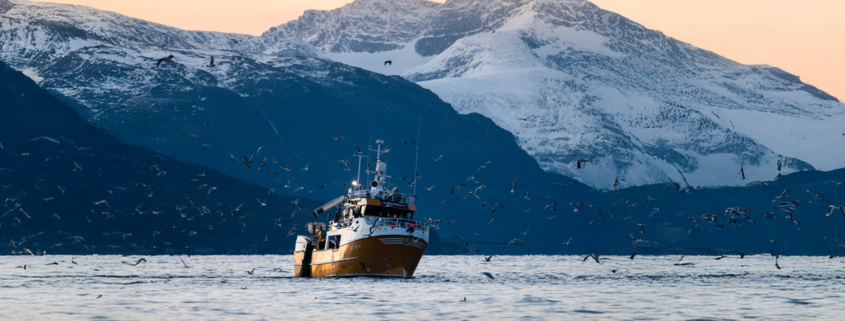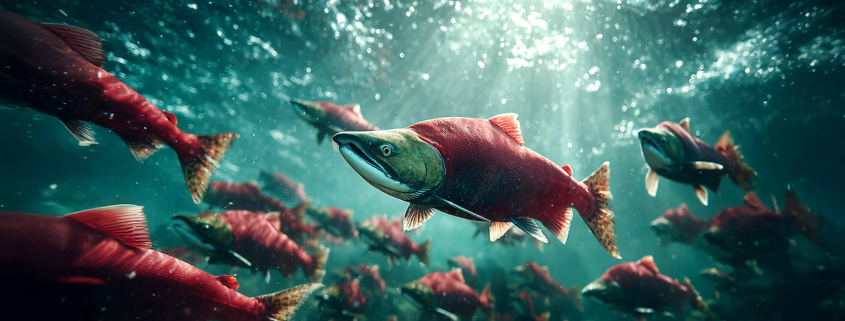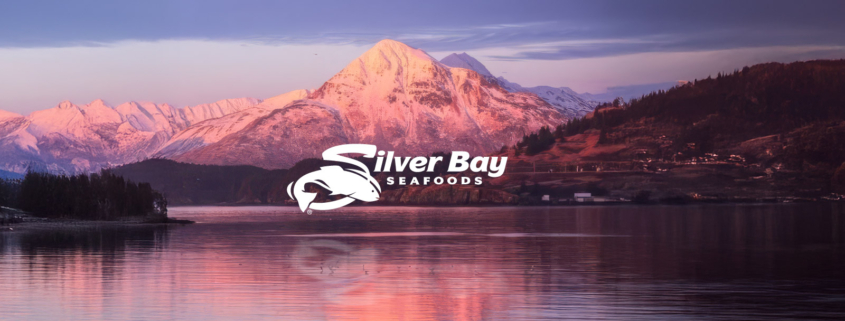Alaska pollock M&A update: Jones Act seen as long-term threat as aging fleet, costs stall deals
‘For fisheries that have low profit margins to begin with, the Jones Act — and specifically the constraint that US-flagged vessels be built in the US — threatens their very viability’ — Mark Working, co-founder and managing partner of Zachary Scott
A century-old US law is threatening the future of the Alaska pollock sector.
The Jones Act — formally Section 27 of the Merchant Marine Act of 1920 — was ostensibly created to protect the US domestic shipbuilding industry. It requires all vessels transporting goods in US waters, including seafood, be built in the US from domestically-sourced materials, be at least 75% owned by US citizens, and be crewed predominantly by US citizens.
Those constraints, combined with higher US labor and steel costs, have left Alaska pollock fishing companies unwilling or unable to undertake new-builds and with no choice but to continue operating 30- or 40- year-old ships, industry sources told Undercurrent News.
“Back in the ’80s, you could build a brand-new [20-foot catcher] boat for $3 million. Now you’re spending $3m with a shipyard just to get plans in place,” Bob Desautel, the chairman of US pollock catcher boat operator Global Seas, told Undercurrent recently. “A catcher boat today costs $55m. Then, you’re looking at up to $400m for a catcher processor.”
In the face of relentless global competition from foreign fleets that are often subsidized by their national governments, the Jones Act contributes to a structural disadvantage for US pollock harvesters and processors, affecting valuations, potential M&A activity and the industry’s long-term future.
Aging assets, uncertain valuations
The Jones Act indirectly mandates that participants in the seafood industry compete on unequal footing in the global marketplace, according to Mark Working, the co-founder and managing partner of Zachary Scott.
His Seattle, Washington-based boutique investment bank provides mergers and acquisitions, capital advisory and strategic financial consulting services to privately held middle-market companies, including many in Alaska’s seafood industry.
“The US seafood industry operates with a relatively inflated cost structure — required by regulation, not because of biology or geography — but earns revenue from selling a commodity in the global marketplace, competing against international producers without the same cost burden. For fisheries that have low profit margins to begin with, the Jones Act — and specifically the constraint that US-flagged vessels be built in the US — threatens their very viability,” he told Undercurrent.
The industry has simply not come to grips with the fact that their quota is limited in value by the fact that their vessels have a set lifespan that is eventually going to run out, he said.
“The biggest issue facing the industry is that the vessels have to be replaced at some point. They’re not forever assets. They are expensive,” Working said. “Funding has to come from borrowing more, which might not be possible in the current environment, or new investor equity, and the large capital expenditures will drag down valuations.”
Between competition from Russia, poor fishing and a bearish 2026 forecast, as reported by Undercurrent, the Alaska pollock sector is struggling, Desautel said. He expects more vessel owners to sell out in the coming years.
“People will be evaluating, looking at how long they want to be in the fishery and who is going to take over when they are gone,” he said.
Additional factors impacting the sector are a higher Japanese yen, higher cold storage and labor costs due to minimum wage increases in Alaska and Washington, a senior banking executive serving Alaska’s seafood sector told Undercurrent. Also, the market has shifted thanks to the drawn-out war in Ukraine,
“It’s tough because so many of the challenges are outside the industry’s control. All those factors create challenges or headwinds that the industry can’t do anything about,” the executive said.
Several major Alaska pollock firms, including Trident Seafoods, Arctic Storm and American Seafoods are carrying “a fair bit of debt,” adding further stress to their balance sheets, the source said.
The significant long-term debt being carried by the sector “is a burden in uncertain times that is pressuring companies,” according to Jana Singleton, a senior vice president with Bank of America, who works closely with the seafood industry in the Pacific Northwest.
“Margins in the captureprocessor business tend to be higher than the other industry subsectors, but long-term financing needs for new or refurbished vessels are substantial,” she told Undercurrent.
Regulatory constraints like the Jones Act are significantly pushing up the cost of doing business for an industry that already faces unpredictable headwinds, Singleton said.
“Debt is a limiting factor on the evolution of the industry. No company would likely have the ability to use cash to build a sophisticated catcher-processor vessel, regardless of ownership, due to the regulatory provisions of building vessels,” she said. “Fortunately, these companies have a very strong financial footing with quota and existing vessel ownership.”
American drama
Perhaps no single company’s situation is more illustrative of the uncertainty facing the Alaska pollock sector than American Seafoods, which had been for sale for nearly a decade until the Seattle, Washington-based fishing firm made the decision to pause its sale process in 2024, citing “dire times” in the surimi market.
“It tells you a lot that they can’t get American Seafoods sold,” the senior banking executive said. “I really thought American would have been sold by now.”
The source continued: “I worked with people in the past few years who made an effort and couldn’t get there. And I’ve talked to other potential buyers and said, ‘Hey, is this something you want to pursue, can we help provide financing? And everyone said they didn’t like the math, or they made an offer that was below what they wanted to sell it for.
“I know they have turned down multiple offers. I suspect if they had a chance to do it over, they might have taken one of those offers, because they were higher than where the market is now.”
The big question mark for American is its vessels, the source said.
“Are they something that people are willing to take a bet on? I don’t know. It seems like pretty steady business but major capex awaits,” he said. “[Potential buyers] are looking at the holistic business picture and the multiple of the cashflow generated by American or other firms is just not working for them.”
Eventually, American will sell, but the timeline is unclear, said C.J. Arrigo, a director at Antarctica Advisors, a specialist strategic advisory service for the global seafood industry.
“That’s the $1 billion question,” Arrigo said. “It’s like Lucy and the football — people get close, and then the ball gets pulled back. Everyone’s waiting, but the math hasn’t worked yet.”
Besides American, though, Arrigo doesn’t foresee many more transactions taking place in the Alaska pollock sector.
“You won’t see the upheaval or the big moves that you saw in the last couple years that were forced by the turmoil we saw,” he said. “You may get some minor consolidation, some putting together of fleets to gain efficiencies.”
The senior banking executive said the sector is not in panic mode, and some companies are doing fine.
“There’s a couple guys on the smaller end that don’t have any debt and do a great job with their boats. They are in great shape but they’re not in a hurry to get bigger. They recognize they’re in a pretty good spot where they can keep making money with what they’re doing,” he said.
Innovation and surimi’s next act
Bright spots for the pollock industry are also seen with product innovations, especially when it comes to surimi, Arrigo said. Processors like Aquamar are getting creative in an effort to leverage the product’s convenience and stability in the fast-growing sushi and grab-and-go market, he said.
“Because it’s cooked, it’s less perishable than the raw ingredients you find in sushi or convenience-store cases. Aquama has seen that opportunity, and others will too,” he said. “There’s also room for innovation in foodservice — especially with fast-food chains looking for new sandwiches or seasonal items during Lent. There’s real potential for companies to move beyond the usual surimi and fish sandwiches, and that’s where the next wave of innovation will come.”
Those opportunities extend to the Amendment 80 groundfishing companies, which Arrigo said “haven’t changed much in decades.”
“Even something as simple as moving from labeling it flounder to yellowfin sole — it’s the same fish, it just sounds more appealing,” he said.
Other obstacles
The Sino-US trade war and other global economic instability caused by US president Donald Trump’s imposition of tariffs on much of the rest of the world are causing additional waves of agita for the industry,
Undercurrent’s sources said.
“The current environment is pushing people to rethink their supply chains and get closer to the customer,” Working said. US tariffs and the US ban on Russian pollock last year have caused a realignment of the Alaska pollock market, with most product now sold domestically. But the industry should be more wary of tariffs, Working said, since they generally cause prices to rise.
Working said the industry was fortunate to win the dismissal of a lawsuit alleging the US government was not doing enough to protect the Bering Sea and Gulf of Alaska from damage caused by trawling for pollock, as Undercurrent reported.
Call for reform
If the industry could collectively take aim at one problem, Working said it’s the Jones Act that must be targeted for reform.
“The act was meant to protect US shipyards, but it’s created an inefficient monopoly,” he said. “American yards build at three to five times the global cost. The result is an aging fleet, higher prices and less competitiveness.”
While the law’s national security rationale still carries political weight, especially with the Trump administration, which has sought to bolster domestic manufacturing, there’s ample evidence that targeted reform, such as allowing foreign-built hulls or the use of imported steel, could benefit US consumers.
“Most Americans are unaware of the Jones Act and the effects it has on everyday purchases. That’s because from the end consumer’s perspective, there’s no explicit Jones Act surcharge on [US-caught seafood], despite a very real increase to price,” he said.
American shipyards, domestic shipping firms and maritime workers have lobbied Congress hard to maintain the status quo, and the success of that campaign can be seen in the staunch support of the act by Alaska’s two US senators, Working said.
Perhaps instead of lobbying for US Department of Agriculture purchases, which have hoovered up a major portion of the US product available on the market, the industry should focus on Jones Act reform, the senior banking executive suggested, saying there’s a political opportunity available in the form of Trump’s “restoring America’s seafood greatness” executive order, issued in April.
“Some kind of Jones Act exemption is the only way they can afford to recapitalize the fleet. And without upgrades, the fleet will never become more efficient,” he said. “We’re at the point where companies need to get a two-for-one on a factory trawler, allowing them to tie up two vessels by the efficiencies gained in one new boat. If you could do that for $125m, that would be great, but you can’t right now,” he said.
The federal government could help further by committing to investments in port and shipbuilding infrastructure, he said.
Another senior banking executive actively working with the Alaska pollock sector said the burden and inflexibility of the Jones Act is putting the US domestic fishing industry at a huge disadvantage that could eventually create an existential crisis.
“The Jones Act isn’t protecting us anymore. It’s pricing us out of the future,” he said.
SOURCE: Undercurrent News





